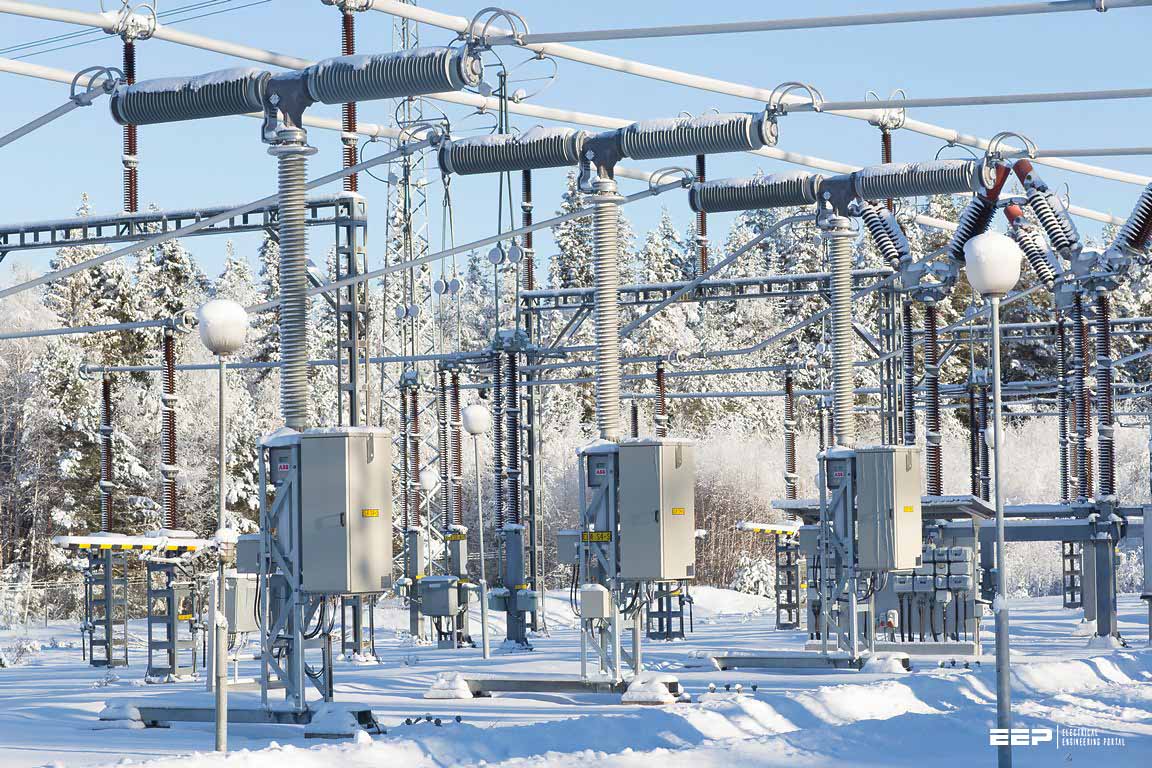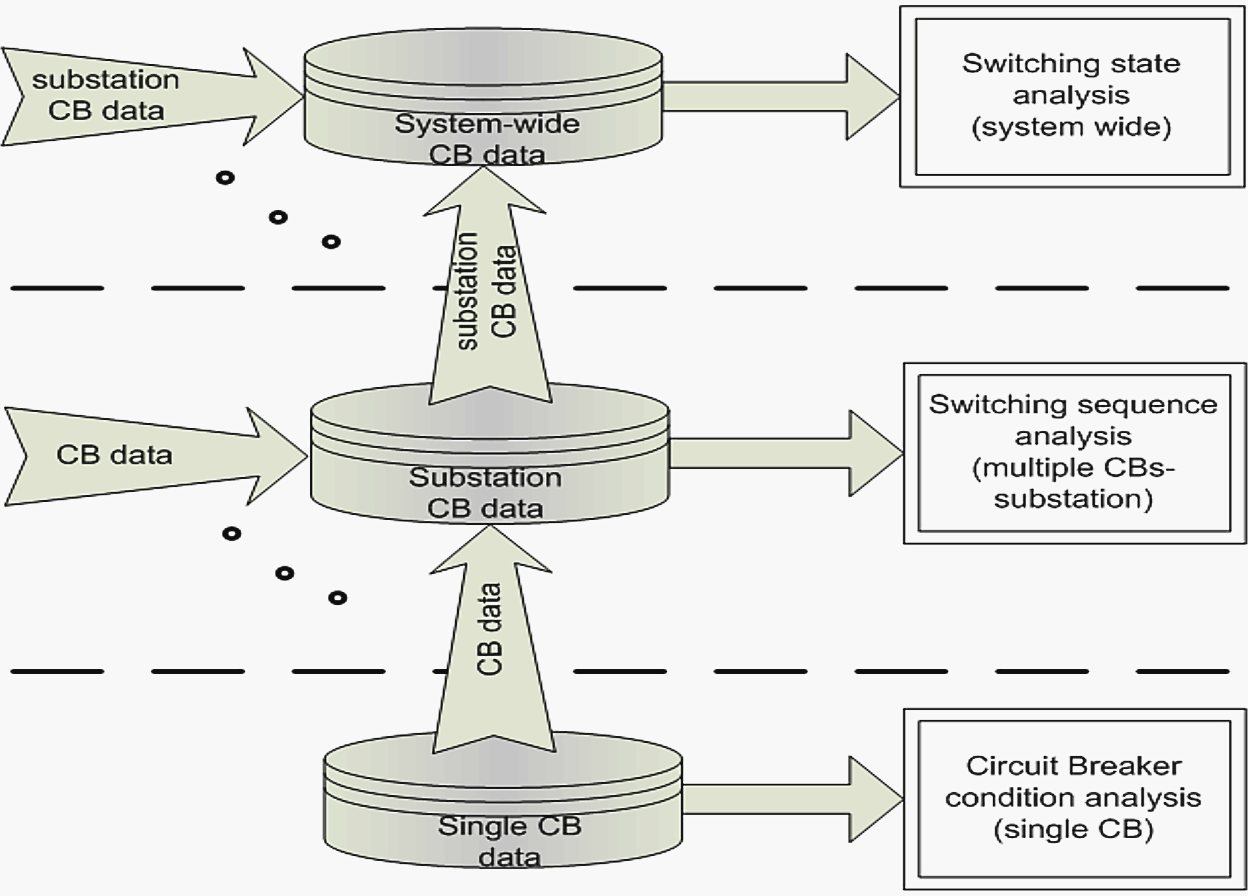Circuit breaker monitor system
The importance of maintaining power system equipment, especially transmission and medium voltage distribution circuit breakers, has increased due to the aging assets problem. Proposed circuit breaker monitor system will improve CB condition monitoring performing online monitoring of all available signals in the breaker control circuit.

This system should provide data for continuous condition assessment, identification of problems, and in some cases prediction of failures and operating problems before they become critical. Knowing the condition of the circuit breaker can facilitate planned maintenance of the equipment. This would allow decrease in down time and increase in reliability and availability of the circuit breaker.
While the monitoring data from single circuit breaker can provide only information about the operation and status of the individual breaker, data from multiple breakers located across substations can enable implementation of substation and system-wide monitoring and control applications.
Based on data availability three levels of analysis applications are possible. Firstly, single breaker operation and condition analysis, which can be performed, based on current and historical data available only from single circuit breaker monitoring device.
Secondly, analysis of a switching sequence that involves multiple breakers uses time correlated data from multiple circuit breakers form single substation or two adjacent substations. Finally, system wide applications are using data from multiple circuit breakers across the system.

First two application levels could be installed on a substation PC or circuit breaker monitoring concentrator. System wide applications require system wide data so they have to be located in the control center.
Circuit Breaker Condition Analysis
In the past, circuit breakers were maintained using a time-based schedule. During maintenance, a number of problems could be discovered and solved. This method could be costly and inefficient. In between maintenance intervals it was never clear if the breaker functioned exactly as desired.
The reasons to propose a continuous monitoring of a circuit breaker is to assess if the breaker functions as desired and to track trends in the breaker behavior.
Following is a list and brief overview of expected benefits from the utilization of online circuit breaker condition monitoring, which could be achieved using the proposed system:
Increase System Reliability
Most additions and improvements to power systems are made to increase system reliability. Used effectively, circuit breaker monitoring can increase the reliability and availability of equipment to meet these demands. Circuit breaker monitoring can help by providing information on the condition of the circuit breaker.
Optimize Maintenance Activities
With accurate information on the condition of circuit breakers, utilities can better schedule maintenance activities. This will allow implementation of condition-based maintenance instead of the traditional time-based maintenance, and will provide a basis for optimizing the priority of the equipment to be maintained.
Reduce Maintenance Costs
Monitoring which provides the right information can be used to initiate condition based maintenance, allowing utilities to optimize the activities of maintenance personnel.
It could also provide information about equipment problem and suggest when to perform maintenance without performing costly on-site visit.
Extend Equipment Life
The circuit breaker monitor can identify some problems before they escalate into a major failure. Being able to identify problems early and allow for timely repairs will extend the equipment life and allow the utility to receive greater benefit for their investment.
Recommended reading:
Why substation equipment fails and why it’s wise to think of that much before failure
Better Failure Analysis
Circuit breaker monitoring can provide adequate post-mortem information that can help a utility to determine if the failure was an isolated incident or if the problem is generic to a range of similar breakers.
This information can be used to initiate action to prevent similar failures on other breakers. This information could also help the circuit breaker manufacturer to improve future circuit breaker designs.
Information obtained from online circuit breaker monitoring system can also be used to perform substation and system-wide reliability studies. It could give necessary equipment reliability parameters, which are very important for an accurate reliability study.
Switching Sequence Analysis
In modern control centers, system operators should keep track of equipment operation. During switching in substation, many events could happen in a very short period. From data currently available to operator, it is very hard to track those events and make conclusions about performance of the switching operation.
Automatically processing of the switching events could help to identify whether sequences of operation were as expected. Necessary requirement for this kind of analysis is the time synchronization between signals from different breakers, which the proposed system provides.
The essence of digital substation automation: Timing precision & real-time data
For example, in the case of a single breaker, analysis should give precise information whether breaker failure logic worked out properly and finally disconnected minimal substation section. This kind of monitoring and analysis enables us to track all events that happen on CBs, so later on we can precisely reconstruct sequences of events.
In order to open all the circuits that supply fault current more than one circuit breaker typically reacts. It is very important that a minimal number of circuits is opened in such case. By tracking sequence of events in a substation, it is possible to predict some events that are anticipated in the near future.
Switching sequence analysis can be used to improve synchronous switching operations such as: switching of unloaded transformers, capacitor banks, and reactors. It is very important that breakers, which need to operate simultaneously to disconnect faulted part of the system, have similar operation timings. If this is not a case, slower breaker will always take over complete fault current for a short period before opening.
This means that slower breaker will be more stressed and perhaps have shorter lifetime as a result. Switching operation analysis could be used to readjust breaker mechanism, to make the operation synchronous.
System Wide Applications
Data obtained from CBs from all over the system can improve several system wide applications. Accurate and reliable CB status data are used in the topology processor application aimed at maintaining accurate assessment of the current electric network topology.
Topology Processor
An automatic topology processor is widely used in many power system analysis programs, such as state estimator, security analysis, on-line load flow and optimal power flow computation, dispatchers training simulators, graphical power system representation programs, real-time power system fault diagnosis and restoration programs. Among them, some operate continuously on a periodic basis while others run on demand.
Network topology defines the connectivity of power system devices. A power system network is configured to satisfy reliable and secure system operation. Power system network connectivity does not remain static because the breakers change their status (ON/OFF) from time to time due to various reasons.
System disturbances like fault, sudden line overload, etc. may lead to tripping of transmission line(s) stopping propagation of the disturbance to the healthy portion of the network. A topology processor examines the connectivity among the nodes (buses) of a power system and based on this analysis, determines topology of the system network.
Figure 2 illustrates the traditional way of circuit breaker status acquiring for topology processing. RTUs usually monitor the control circuit contacts “a” and “b”. Those contacts are designed to be in a complementing position so that an opening or closing of the CB can be easily determined by verifying the opposite status of the “a” and “b” contact positions.
While this approach has been used for some time, the reliability of the contacts indication has always been a concern due to relatively frequent errors in the auxiliary contacts, that may malfunction, or the errors in the SCADA communications, that may fail.

There are many algorithms to validate CB status information based on other measurements form the substations.
However, a status change does not necessarily result in a change in the bus/branch-oriented model, which is usually used to check the breaker status. A status change may not affect the bus connectivity but may change generation or load at a bus. This type of error as well as bus/branch model error can lead to the security analysis giving wrong results.
In a control center the topology processor program is usually used in several applications. Firstly, state estimator program uses system topology as an input to the real time security analysis. Power flow analysis also uses the topology processor as an input.
| Title: | Automated system monitoring of MV/HV circuit breakers (condition, status and operation) – Zarko Djekic at Texas A&M University in partial fulfillment of the requirements for the degree of MASTER OF SCIENCE |
| Format: | |
| Size: | 2.1 MB |
| Pages: | 110 |
| Download: | Here 🔗 (Get Premium Membership) | Video Courses | Download Updates |



Dear Zarko DGEKIC ,
I am deeply impressed by the your work on on line monitoring of EHV Circuit Breakers .
I am presently on a consulting assignment of DFCCIL ( Dedicated freight corridor in India ) .
we are looking for working model of the online monitoring system control through SCADA .
We want to know whether any body has brought out a model for practical use in industry .
Will be extremely glad if you can share information on this . ( or any body who is in know of the system )
Regards
KVV Satyanarayana
Formerly Chief Electrical Engineer
Indian Railways .
+917358686300
Good source for information in developing future transformers
The information are very good! Thank you for posting…